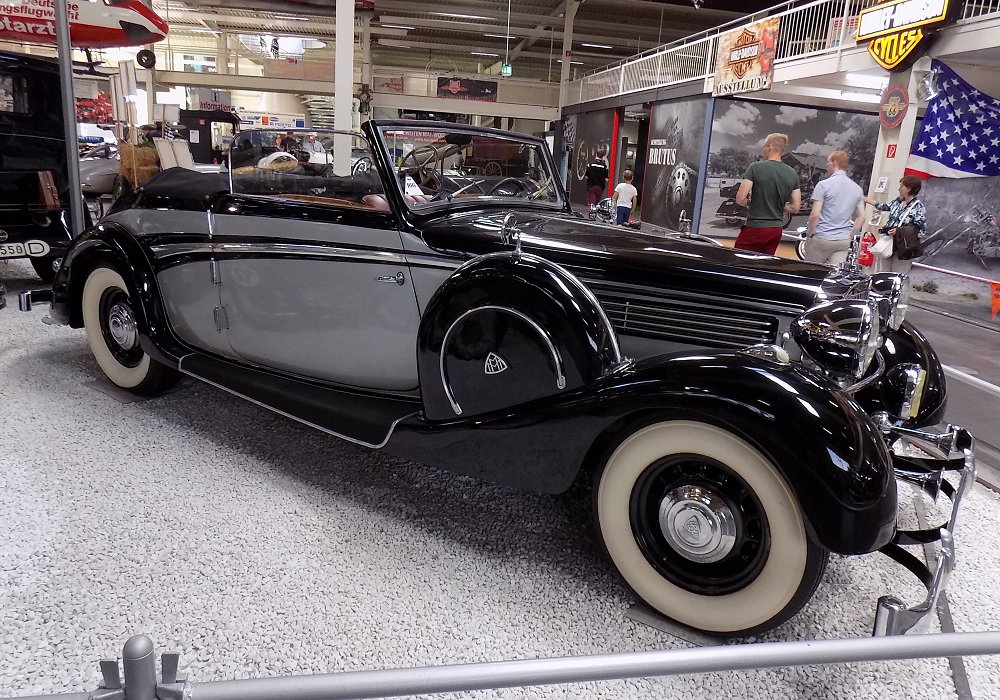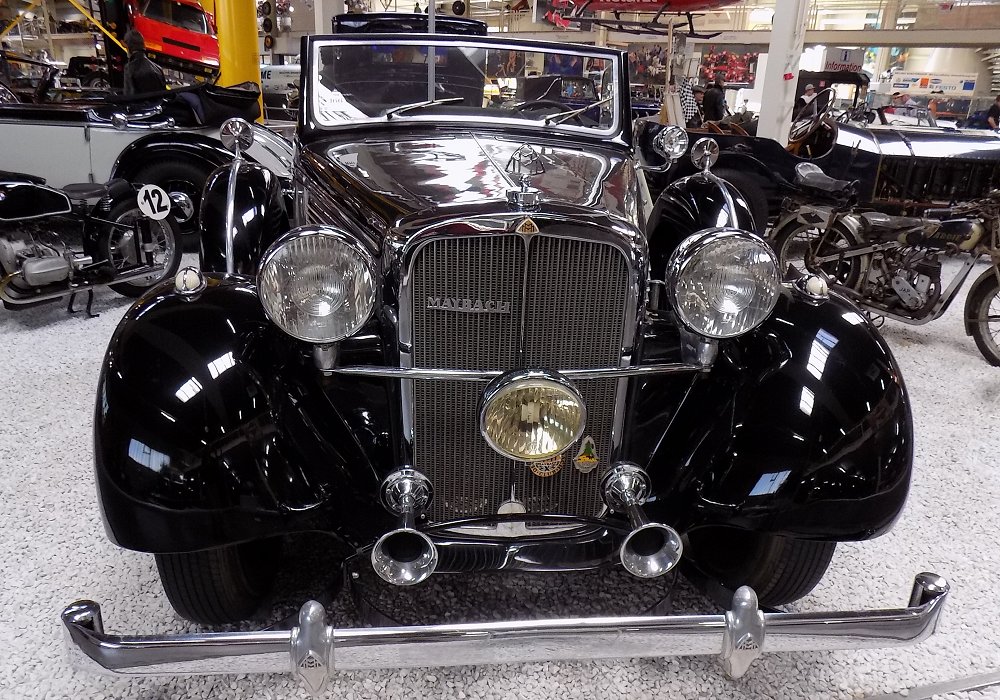Description
The Maybach SW 38 Cabriolet was one of the most elegant and exclusive body styles offered on Maybach’s second-generation independent-suspension chassis. Introduced in 1936, the SW 38 represented a major refinement of the earlier SW 35, and when paired with a bespoke cabriolet body from coachbuilders such as Spohn, Erdmann & Rossi or other elite German ateliers, it became one of the most desirable luxury open cars of the late 1930s. Combining Maybach’s advanced engineering with the glamour and presence of a full luxury convertible, the SW 38 Cabriolet embodied pre-war German craftsmanship at its highest level.
The SW 38 was powered by an enlarged 3.8-litre straight-six, a supercharged version of Maybach’s sophisticated overhead-valve engine. With a clutch-operated Roots-type supercharger, it produced around 150–160 horsepower, unusually strong output for a mid-sized luxury car of its era. The engine’s calling card was its refinement: silent at idle, smooth across the rev range, and capable of moving even a large cabriolet body with quiet authority. Maybach’s background in aviation engineering gave the unit precision, balance and reliability far above the industry norm.
Suspension was one of the model’s greatest innovations. The “SW” designation reflected the Schwingachse independent rear suspension — a swing-axle system that, together with independent front suspension, delivered exceptional ride comfort and stability for the time. This made the SW 38 far more advanced than many contemporary luxury cars, which still relied on rigid axles. The car’s long wheelbase, strong box-section frame and carefully tuned springing allowed it to float over rough surfaces while remaining composed at higher speeds.
Maybach’s semi-automatic transmission further contributed to the car’s refinement. The advanced preselector gearbox paired with a torque converter allowed clutch-free shifts in many scenarios, giving the Cabriolet a seamless, fluid driving quality well suited to open-air motoring. This combination of power, smoothness and mechanical sophistication made the SW 38 one of the most accomplished grand-touring convertibles of the pre-war era.
The cabriolet bodywork, built almost always to individual order, was the element that elevated the SW 38 from a technically brilliant luxury car to a rolling piece of art. Spohn — Maybach’s closest coachbuilding partner — produced some of the most beautiful designs, with long flowing wings, delicately balanced proportions, elegant door lines and a fully folding soft-top that disappeared cleanly into the rear deck. Other coachbuilders offered variations ranging from two-door sport cabriolets to large four-seat luxury cabriolets with Pullman-style accommodation. Regardless of style, each SW 38 Cabriolet exhibited meticulous craftsmanship: hand-shaped panels, deep rich paintwork, and a sense of tailored elegance that rivalled creations from Erdmann & Rossi, Saoutchik or even pre-war Rolls-Royce specialists.
Inside, the SW 38 Cabriolet offered the same level of luxury found in the limousine versions but with a more glamorous and personal atmosphere. Interiors were trimmed in the finest leathers, with thick carpeting, beautifully matched hardwood veneers, polished metal switchgear and instrumentation of jeweller-like precision. Many cabins featured fold-down tables, vanity sets, heater units, side pockets, cigar lighters, and even customised accessories depending on the owner’s wishes. With the roof down, the cabin became an elegant open-air salon, showcasing both the craftsmanship and the mechanical hush of the Maybach drivetrain.
On the road, the SW 38 Cabriolet delivered a driving experience unmatched by most open luxury cars of its time. The supercharged straight-six provided effortless acceleration, while the independent suspension absorbed imperfections with ease. The car felt stable and unhurried even at higher touring speeds, and its quietness — rare for a convertible — impressed both period reviewers and modern historians. Steering was steady and precise, suiting the car’s grand-touring character rather than sporting pretensions.
Production numbers were very low. Each SW 38 Cabriolet was a bespoke commission, built for an elite clientele and priced accordingly. Survivors are rare and regarded as some of the most valuable pre-war German luxury convertibles. Their blend of technical sophistication, elegance and rarity makes them centrepieces of major collections and museums.
Today, the Maybach SW 38 Cabriolet stands as one of the most refined and charismatic open luxury cars of the 1930s. It represents the perfect fusion of Maybach’s advanced engineering, Spohn’s (or other coachbuilders’) masterful craftsmanship and the glamorous spirit of pre-war motoring. As a symbol of German prestige and bespoke automotive artistry, it remains one of the most admired body styles ever mounted on a Maybach chassis.


